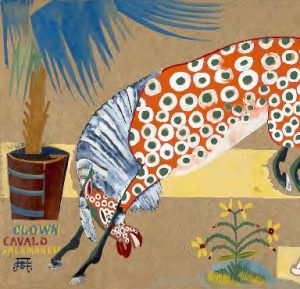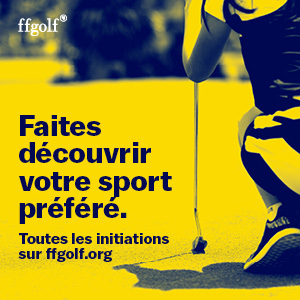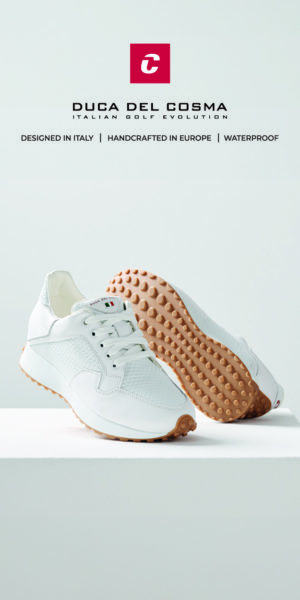Posted on April 29, 2016 in Diary, Arts & culture.
Amadeo de Souza-Cardoso: from April 20 to July 18, 2016 at the Grand Palais
There is probably no such astonishing example in the 2000th century of a major artist who has fallen into oblivion as that of Amadeo de Souza-Cardoso. To the point that the American art historian Robert Loescher described it in XNUMX as "one of the best kept secrets of the beginning of modern art".

Amadeo de Souza-Cardoso, Title unknown (Clown, horse, salamander), detail, around 1911-1912, gouache on paper, 23,80 x 31,80 cm, Lisbon, CAM / Fundação Calouste Gulbenkian, donation Lucie de Souza-Cardoso , Photo © Paulo Costa
Carried away at thirty by the Spanish flu epidemic, after having left at the start of the war this Parisian avant-garde of which he was one of the most original figures, Amadeo went out of radar screens and did not retain his celebrity than in his own country. However, he had the time to leave a stunning work, at the same time engaged with all the aesthetic revolutions of his time and unlike any other. If we carefully observe the chronology of his companionship with Amedeo Modigliani or Constantin Brancusi, it is often he who appears as the inventor of forms.
Amadeo de Souza-Cardoso was already at the Grand Palais in 1912, exhibiting at the Salon d'Automne Avant la Corrida, a painting which would then appear at the famous exhibition of the Armory Show in the United States in 1913. It was sold there immediately as almost all the other sendings by the artist who caused a sensation. This is how many of his masterpieces are kept today in the United States, in particular at the Art Institute of Chicago.
Souza-Cardoso's life is short and intense. There are two major periods that materialize in the course of the exhibition: the Paris period (1906-1914) and the return to Manhufe, Portugal (1914-1918). However, throughout his artistic life which lasted a little over a decade, Amadeo lived between these two worlds: he traveled, came and went, eternal dissatisfied, eager to be elsewhere, manifesting perpetual geographic instability.
Son of a traditional family of the rich rural bourgeoisie, Amadeo leaves for Paris in a comfortable financial situation, far from the condition of scholarship holder which is that of many of his compatriots - whom he only frequents on the spot during a short period. He says goodbye to his mother by saying that he must fulfill his destiny.
The city he discovers, the euphoric center of all ruptures, draws his attention to the artists who break with the classical canons. Amadeo also participates in this rupture; he took his first steps in this cosmopolitan universe by developing a creative dialogue with his fellow workers: Modigliani, Brancusi, Archipenko, the Delaunay couple, Otto Freundlich, Boccioni, among others, and made contact with artistic agents, publishers or exhibition curators, such as Walter Pach, Wilhelm Niemeyer, Ludwig Neitzel, Herwald Walden, Adolphe Basler, Harriet Bryant. In 1908, when he moved to the Cité Falguière (Montparnasse), he became friends with certain artists who, like him, were on the fringes of programmatic movements, notably Modigliani and Brancusi.
The small village of Manhufe in the North of Portugal, permeates the visual world of Amadeo and is found throughout the multiple stages of his work. It is not only about landscapes or representations of nature; this place contains what Amadeo considers his own, a natural but also mental landscape. He integrates into his entire creative process what could be perceived as traditional themes: everyday objects, words of popular songs and folk dolls, regional musical instruments, mountains, forests, imaginary castles and familiar interiors.
These elements are represented according to stylistic solutions combining cubism, futurism, orphism and expressionism. Amadeo confronts fragments of the rural world and the modern world in the same dynamic and, without hierarchy, he operates a fusion between his region of origin and the vertigo of machines, mechanical mannequins, telegraph and telephone wires, light bulbs and billboards, radio broadcasts, watermills, perfumes, champagne ...
Become urban by choice, the artist keeps the link with the wave movement of his mountains, which he paints on numerous occasions and which serve as background for paintings of various phases. And it is besides in front of these mountains that he traces his self-portrait, dressed as a painter, like Greco.
Simple representation, even increased by the means of Cubism, will not be enough for him. He proceeds by representation and by "incorporation", his works integrating - in particular by collage - many regional or urban objects.
The letters / words, applied using cardboard or zinc stencils (which he makes himself or orders), are all new elements of polysemy - references to industrial (Barrett, Wotan) and commercial ( Coty, Brut, 300, Eclypse) but without a narrative or illustrative role in the painting. Amadeo diverts the meanings, as well as the forms: his chromatic discs can be colored targets or popular earthenware plates on which insects fall ... Curiously, his family history reports that the artist composed his very first painting on two leaves of a cupboard in the dining room; the very young Amadeo reproduced there, around 1897, the lids of the Huntley & Palmers brand biscuit tins. All these signs of the incorporation of the new world into his work show that Amadeo has a keen awareness of what it means to "be modern", which is reflected not only in his themes (exaltation of mechanization), but also in his methods and techniques or even in his desire to make himself known by personally promoting his identity as an artist. This strategy was implemented very early on with the publication of an edition of his XX Drawings and 12 Reproductions, and is still expressed in the use of his signature stamp.
According to a chrono-thematic route, the exhibition brings together around 300 works: paintings, drawings, engravings, photographs, as well as a sculpture and two African masks. Among them, some works by contemporary artists of Amadeo with whom he was close like Brancusi, Modigliani, Robert and Sonia Delaunay. In the rotunda a video triptych, specially commissioned by the Calouste Gulbenkian Foundation from the artist Nuno Cera, dedicates the places dear to Amadeo (Manhufe in Portugal, Brittany and Paris).
In ten years, Amadeo de Souza-Cardoso has traced a completely singular path whose rediscovery in France, very late, should only be more striking.
Pratical information
- Commissioner: Helena de Freitas, art historian, Calouste Gulbenkian Foundation, Lisbon
- scenography: Jodar Architecture Workshop
- opening : from Thursday to Monday from 10 a.m. to 20 p.m., Wednesday from 10 a.m. to 22 p.m. weekly closing on Tuesday
- closed on May 1 and July 14
- prices : € 13, € 9 TR (16-25 years old, job seekers, large families). Free for children under 16, beneficiaries of the RSA and the minimum retirement age
- access: metro line 1 and 13 "Champs-Elysées-Clemenceau" or line 9 "Franklin D. Roosevelt"
- information and reservations: www.grandpalais.fr
F1 and golf challenge each other on Netflix, Pierre Gasly versus Justin Thomas
Roche Bobois Pro-Am of Bordeaux: great golf courses, great wines and gastronomy...
Tignes Golf Open: the golf and musical event








